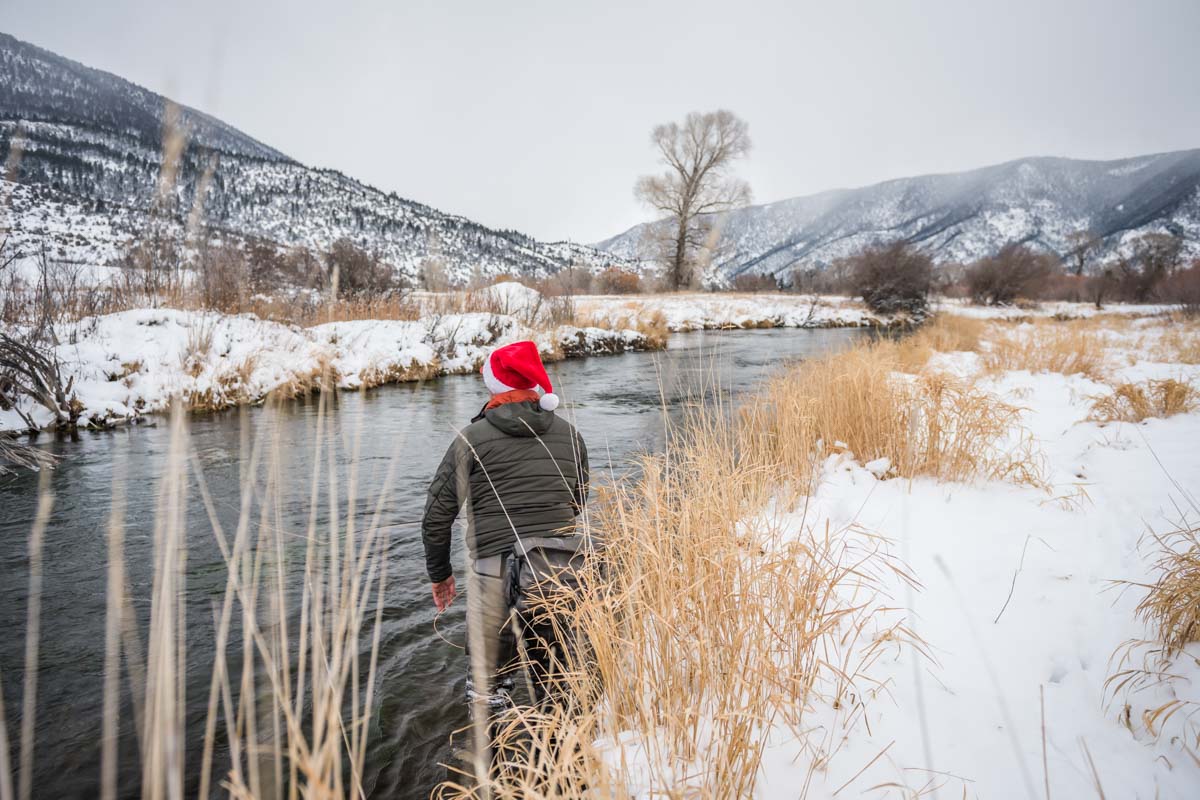
The spring creeks are a great winter option. The water that percolates from the springs are always at Montana’s mean annual temperature of 52 degrees which is much warmer than the surrounding freestone rivers. This produces a higher metabolism in spring creek fish than trout in other waters and gives anglers a better chance to hook up. The more active nature of spring creek trout in the winter combined with high trout concentrations, makes them a top choice in the cold weather months. You can almost always find a rising fish or two if you hunt hard enough that are looking for midges but on most days expect to nymph fish. The slower slots with will concentrate trout but they won’t move far to take flies so expect takes to be subtle. As a rule I always use yarn indicators on spring creeks – generally custom cut to be just big enough to not sink. These indicators allow you to detect very subtle disturbances resulting in more hookups. Fly selection doesn’t have to be very sophisticated this time of year and a scud trailed by your favorite size 22 midge larva should be good enough. Where you fish and your presentation is much more important than changing out lots of flies. Rod fees are just $50 in the winter on the Livingston Creeks. The crystal clear water of the spring creeks make it easy to see fish....but getting them to eat your fly requires a little more skill. You need a long, light leader, a good drift, light tippet, and a sensitive indicator like yarn to detect the subtle strikes.
The two main creeks we fish are Armstrong's and DePuy's spring creeks near Livingston and Bozeman, Montana. These creeks are private and do require a rod fee, but, if you enjoy sight-fishing to rising or shallow water feeding trout, the spring creeks are an exciting place to get in some sight-fishing to trout on small waters.
The Month Ahead:
The information above will be reliable all winter long because of the consistent stream flows on the creeks.
Long Term Fishing Forecast:
The Livingston creeks will see some extra fish starting in March when rainbows move in from the Yellowstone prior to spawning. Baetis mayflies will also become a target of the trout in mid April.
Visit Our Shop for These Top Spring Creek Flies Right Now:
Para Adams in size 16-22
Juju Baetis size 22
Wondernymphs in black in sizes 18-22
Beadhead Zebra midge, black or red, size 22
Mole Midge size 20
Scuds, sowbugs like Ray Charles in natural or pink in sizes 18-22
Midge larva in red or purple in size 20-22
Looking for More Great Content?
6 (PLUS ONE) Essential Flies for Fall Fishing in Montana
7 Best Tips for Walk and Wade Fishing in Montana
6 Great Tips for Fishing Hoppers, Ants, Beetles
Dry-Dropper Rigs: When to Use and When Not to Use
How to Rig and Fish a Dry-Dropper Set Up for Montana Fishing

